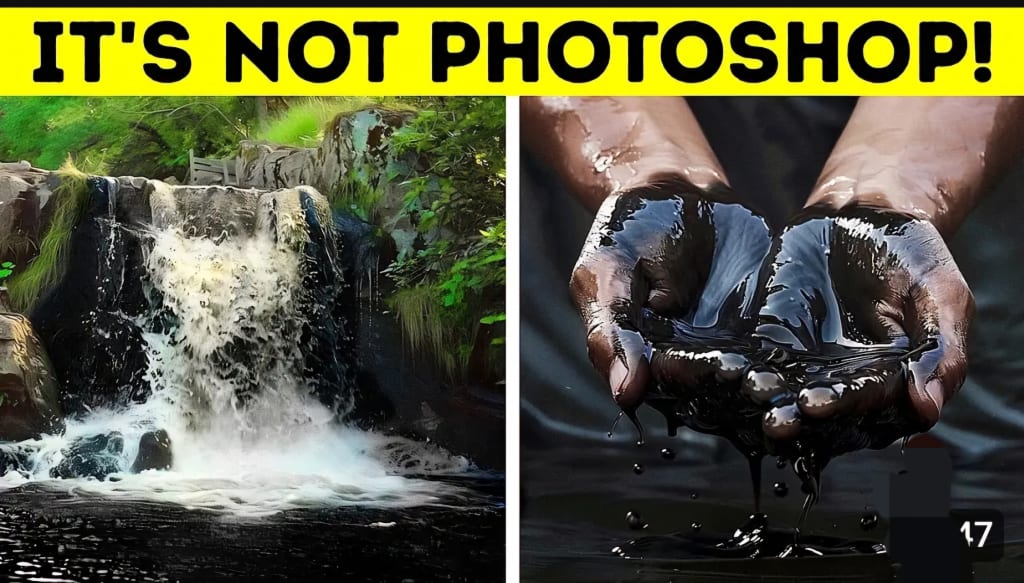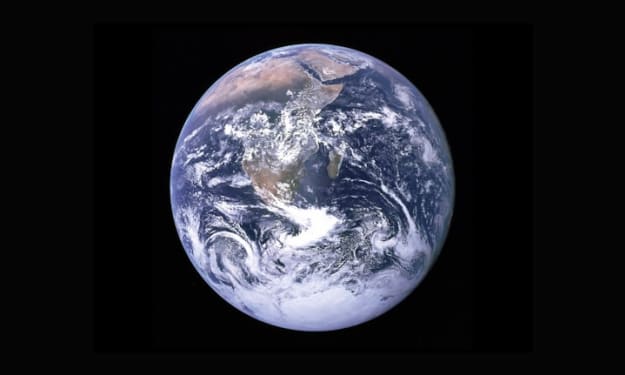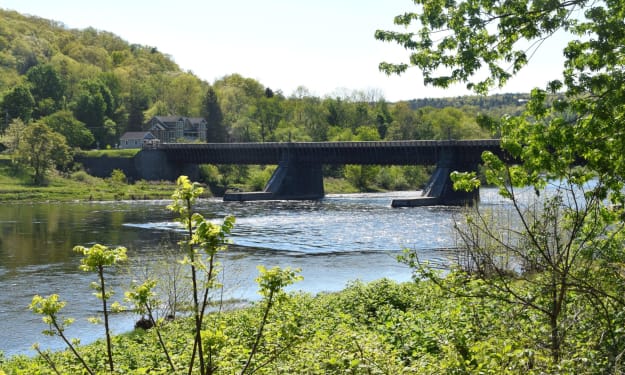Rivers of the World: Nature's Marvels and Mysteries
Rivers of the World: Nature's Marvels and Mysteries

###
Most rivers in the world flow into the sea, but the Okavango in Africa defies this norm, channeling its vast waters right into the Kalahari Desert. This river achieves what seems impossible, challenging the conventional laws of nature. Let's embark on a journey to explore the fascinating tales of the Okavango, an Antarctic underground river, the shortest river in the world, and many other intriguing water bodies across the globe.
#### The Enigmatic Okavango River
The Okavango River starts in the highlands of Angola, travels for about 1,000 miles, and culminates in the largest inland delta on Earth, the Okavango Swamp. Unlike most rivers that reach the ocean, the Okavango pours into the Kalahari Desert, creating a unique wetland in an otherwise arid region. This delta has a dramatic landscape, with land slopes dropping nearly 150 feet, approximately half the height of the Statue of Liberty.
Around 2,000 years ago, the area now known as the Okavango Delta was part of a lake that dried up. Today, it takes several months for the Okavango's waters to complete their journey, continually reshaping the landscape. The first European to discover the delta was the Scottish explorer David Livingstone, who was astonished to see water seemingly flowing backward and uphill. This unusual phenomenon was later explained by scientists who found a hidden network of faults beneath the sand, part of the Great Rift Valley. Major earthquakes, like the one in Indonesia in 2004, can set off chain reactions, causing tiny cracks underground to shift and send water down the river, initiating floods that transform the delta.
During May and June, when winter begins in the southern hemisphere, floods bring fresh water and life to the swamp. Islands in the delta submerge completely at the peak of the flood and resurface at the end of the wet season. This cycle supports a rich biodiversity, including migratory elephants, lions, cheetahs, buffaloes, wildebeests, hippopotamuses, zebras, wild dogs, and crocodiles. The delta is also a haven for birdlife, with 450 species including ibises, herons, cranes, and geese.
#### The Hidden Antarctic River
Scientists from Imperial College London made a groundbreaking discovery of an underground river beneath the Antarctic ice sheet. This river slurps up water from an area as large as Germany and France combined. Previously, it was believed that lakes under the Antarctic ice existed in isolation, but this newly found river reveals an interconnected network.
Water under the ice forms from two main sources: melted snow seeping down or the Earth's natural heat combined with the ice grinding over the ground. While Antarctica experiences surface melting during summer, it's generally too cold for significant melting. This underground river could accelerate the loss of Antarctica's icy cover. If surface temperatures rise enough to melt the ice, the water could rush down and destabilize the ice sheet, creating a melting mess similar to Greenland. Researchers are delving deeper into understanding this river system to foresee how changes in Antarctica might impact the planet.
#### The World's Shortest Rivers
The Roe River in Montana is a mere 200 feet long, flowing between Giant Springs and the Missouri River. This river was once listed in the Guinness Book of World Records as the shortest river, but the category was removed due to debates over the title. Oregon residents claim their D River is shorter, depending on the measurement time. There might even be shorter rivers in Norway or Indonesia.
According to the official definition, a river is a constant flowing water current fed by upland sources or other bodies of water like lakes or watersheds. Creeks and brooks merge to form streams, which eventually become rivers, carrying water from higher to lower lands and typically ending in the ocean. Despite their brief lengths, Roe and its counterparts technically deserve the title of rivers.
#### The Majestic Rio Negro
In South America, the Rio Negro is the largest blackwater river in the world and the largest left tributary of the Amazon. Its waters, appearing pitch black from a distance, get their dark color from humic acid produced when plants containing phenol partially decompose. Despite its inky appearance, the Rio Negro supports a thriving fishing industry and serves as a vital nesting ground for turtles.
In the 17th century, explorers found many indigenous people along the Rio Negro, though conflicts and diseases likely reduced these populations. The river basin hosts around 700 documented fish species, including at least 100 unique to the area. The Cardinal Tetra, a popular aquarium fish, is one of the many species native to this basin. A canal links the Rio Negro to the Orinoco River, allowing only the toughest aquatic species to navigate between the contrasting blackwater and clear water sections.
#### The Bifurcating Two Ocean Creek
In Wyoming, there's a unique creek that splits, draining into both the Pacific and Atlantic Oceans. Starting high in the Teton Range, the Pacific Creek merges with the Snake River, which joins the Columbia River and eventually flows into the Pacific Ocean. The Atlantic Creek heads east, flowing into the Yellowstone, Missouri, and Mississippi Rivers, and finally into the Gulf of Mexico. On a map, connecting these two watersheds forms a single blue line from Oregon to Louisiana.
Explorers seeking the Northwest Passage never realized they could have used this creek with tiny boats. Some scientists suggest that cutthroat trout discovered this route long before humans, migrating from the Snake River to the Yellowstone River via Two Ocean Creek.
#### The Rainbow River of Colombia
Every summer, the Cano Cristales in Colombia transforms into a liquid rainbow, displaying vivid red, yellow, green, blue, and black hues. This phenomenon occurs from late summer to fall when conditions are perfect for aquatic plants, particularly a type of seaweed, to show their colors. During the wet season, the river's fast flow prevents sunlight from reaching these plants, while the dry season leaves them starved of water. The intermediate period creates ideal conditions for this colorful display, unmatched anywhere else in the world.
The unique beauty of Cano Cristales has drawn numerous tourists, raising concerns among scientists about potential impacts on the area's biodiversity. This region is home to rare species of animals, birds, and plants. To protect this natural wonder, ecotourism trails and strict visiting hours have been established.
#### Conclusion
From the desert-bound Okavango to the icy depths of Antarctica, the world's rivers hold countless secrets and wonders. These natural marvels defy expectations and continue to surprise us with their unique behaviors and vital roles in their ecosystems. As we explore and understand these waterways, we gain deeper insights into the delicate balance of nature and our planet's interconnected systems.
About the Creator
Enjoyed the story? Support the Creator.
Subscribe for free to receive all their stories in your feed. You could also pledge your support or give them a one-off tip, letting them know you appreciate their work.





Comments
There are no comments for this story
Be the first to respond and start the conversation.